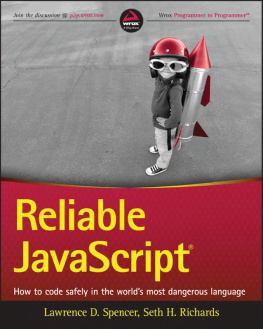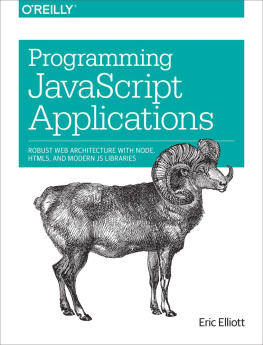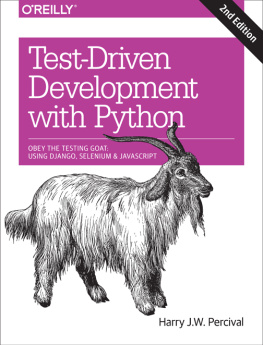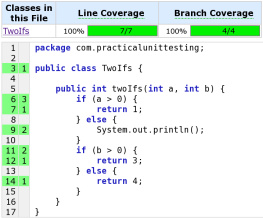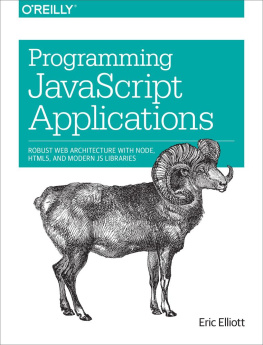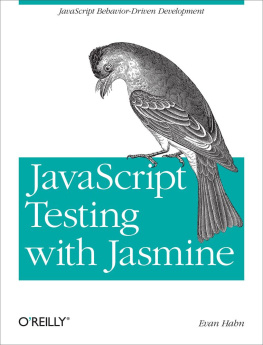Reliable JavaScript
Lawrence D. Spencer
Seth H. Richards
Reliable JavaScript
Published by
John Wiley & Sons, Inc.
10475 Crosspoint Boulevard
Indianapolis, IN 46256
www.wiley.com
Copyright 2015 by John Wiley & Sons, Inc., Indianapolis, Indiana
Published simultaneously in Canada
ISBN: 978-1-119-02872-7
ISBN: 978-1-119-02873-4 (ebk)
ISBN: 978-1-119-02874-1 (ebk)
Manufactured in the United States of America
No part of this publication may be reproduced, stored in a retrieval system or transmitted in any form or by any means, electronic, mechanical, photocopying, recording, scanning or otherwise, except as permitted under Sections 107 or 108 of the 1976 United States Copyright Act, without either the prior written permission of the Publisher, or authorization through payment of the appropriate per-copy fee to the Copyright Clearance Center, 222 Rosewood Drive, Danvers, MA 01923, (978) 750-8400, fax (978) 646-8600. Requests to the Publisher for permission should be addressed to the Permissions Department, John Wiley & Sons, Inc., 111 River Street, Hoboken, NJ 07030, (201) 748-6011, fax (201) 748-6008, or online at http://www.wiley.com/go/permissions.
Limit of Liability/Disclaimer of Warranty: The publisher and the author make no representations or warranties with respect to the accuracy or completeness of the contents of this work and specifically disclaim all warranties, including without limitation warranties of fitness for a particular purpose. No warranty may be created or extended by sales or promotional materials. The advice and strategies contained herein may not be suitable for every situation. This work is sold with the understanding that the publisher is not engaged in rendering legal, accounting, or other professional services. If professional assistance is required, the services of a competent professional person should be sought. Neither the publisher nor the author shall be liable for damages arising herefrom. The fact that an organization or Web site is referred to in this work as a citation and/or a potential source of further information does not mean that the author or the publisher endorses the information the organization or website may provide or recommendations it may make. Further, readers should be aware that Internet websites listed in this work may have changed or disappeared between when this work was written and when it is read.
For general information on our other products and services please contact our Customer Care Department within the United States at (877) 762-2974, outside the United States at (317) 572-3993 or fax (317) 572-4002.
Wiley publishes in a variety of print and electronic formats and by print-on-demand. Some material included with standard print versions of this book may not be included in e-books or in print-on-demand. If this book refers to media such as a CD or DVD that is not included in the version you purchased, you may download this material at http://booksupport.wiley.com. For more information about Wiley products, visit www.wiley.com.
Library of Congress Control Number: 2015941920
Trademarks: Wiley, the Wiley logo, Wrox, the Wrox logo, Programmer to Programmer, and related trade dress are trademarks or registered trademarks of John Wiley & Sons, Inc. and/or its affiliates, in the United States and other countries, and may not be used without written permission. JavaScript is a registered trademark of Oracle America, Inc. All other trademarks are the property of their respective owners. John Wiley & Sons, Inc. is not associated with any product or vendor mentioned in this book.
We dedicate this book to all JavaScript developers
who work hard to hone their craft. You are making the
world a more beautiful place.
CREDITS
PROJECT EDITOR
Christina Haviland
TECHNICAL EDITORS
Keith Pepin
John Peloquin
PRODUCTION MANAGER
Kathleen Wisor
COPY EDITOR
Nancy Rapoport
MANAGER OF CONTENT DEVELOPMENT & ASSEMBLY
Mary Beth Wakefield
MARKETING DIRECTOR
David Mayhew
MARKETING MANAGER
Carrie Sherrill
PROFESSIONAL TECHNOLOGY & STRATEGY DIRECTOR
Barry Pruett
BUSINESS MANAGER
Amy Knies
ASSOCIATE PUBLISHER
Jim Minatel
PROJECT COORDINATOR, COVER
Brent Savage
PROOFREADER
Nancy Carrasco
INDEXER
Johnna VanHoose Dinse
COVER DESIGNER
Wiley
COVER IMAGE
Getty Images/Andrew Rich
ABOUT THE AUTHORS
LARRY SPENCER is Vice President of Application Development at ScerIS, a software and services company in Sudbury, Massachusetts. He and his team create browser-based applications in AngularJS, with a C#/Web API/SQL Server back end. Larry's 35-year career has included stints programming in COBOL, C, C++, C#, and even mainframe assembly language, but he says JavaScript is the most fun. A frequent speaker at Code Camps and other gatherings, Larry enjoys sharing his love of software with the development community. You can find his blog at http://FascinatedWithSoftware.com.
Larry's outside interests include philosophy, chess, and classical guitar. He lives in Marlborough, Massachusetts.
SETH RICHARDS has been crafting software professionally since 2002. He got his start programming embedded devices for the bar and nightclub industry and transitioned to web application development in 2007. He has worked on numerous web-based applications ranging from an enterprise-class geographic information systemcentric physical asset management system to a social network for product discovery and recommendation.
Seth graduated from Plymouth State College (now University) in Plymouth, New Hampshire, where he studied computer science and mathematics. He is currently pursuing his M.S. in Computer Science from the Georgia Institute of Technology. Seth's blog can be found at http://blog.shrichards.com, and he can be followed on Twitter at @shrichards.
ABOUT THE TECHNICAL EDITORS
KEITH PEPIN has been developing sites and applications on the web for over 17 years. Early in his career, he fell in love with JavaScript and has been passionately building dynamic user experiences ever since. He is currently a Senior Software Engineer at Meltwater, and is using HTML5, CSS3, JavaScript, AngularJS, Node.js, and MongoDB to build the next generation of their online marketing intelligence platform. When not coding or spending time with his family, he enjoys other geeky pursuits, including all forms of games, comic books, painting, and sketching.
JOHN PELOQUIN is a software engineer with over 10 years of JavaScript experience ranging across applications of all sizes. John earned his B.A. in Mathematics from U.C. Berkeley and is currently a lead engineer at Spreemo, a healthcare technology startup in NYC. Prior to editing this volume, John edited Professional Website Performance by Peter Smith (Wiley 2012) and Professional JavaScript for Web Developers, 3rd ed. by Nicholas Zakas (Wiley 2012). When he is not coding or collecting errata, John can occasionally be found doing stand-up comedy at an open mic.
ACKNOWLEDGMENTS
Thank you to my wife, Bethany, for her love and support while we wrote this book, and for enduring (or enjoying?) many husband-less nights and weekends while I worked to meet a deadline.
SETH RICHARDS
Thanks to my family for encouraging me to pursue my dreams. My dreams may include writing a book, but they begin and end with you.

